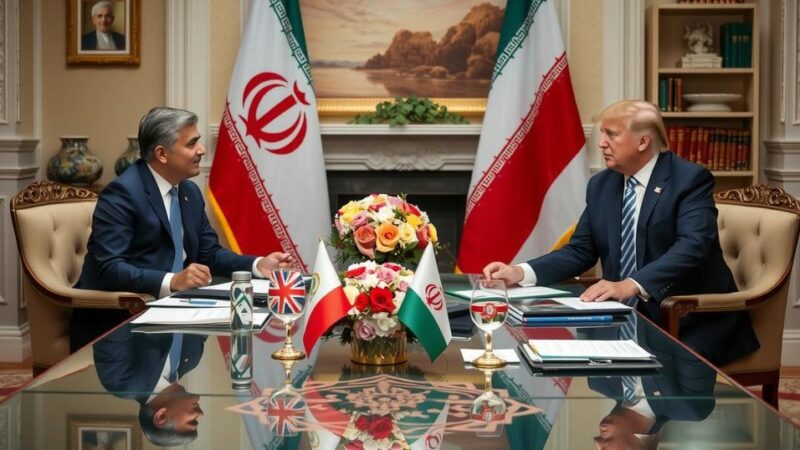The fall of Bashar al-Assad’s government in Syria raises critical questions about U.S. foreign policy, particularly towards Iran, under President Donald Trump. Potential outcomes include escalated sanctions against Iran, regional realignments to bolster U.S. influence, and possibilities for Syrian reconstruction under a pro-Western regime. Trump’s administration is expected to leverage Assad’s fall to implement a more aggressive strategy against Tehran.
The recent fall of Bashar al-Assad’s government in Syria on December 9 has triggered significant discussions regarding its implications for U.S. policy towards Iran under the upcoming presidency of Donald Trump. The capture of Damascus by Syrian armed groups has led analysts to ponder whether the United States will intensify its sanctions against Iran, a key ally of the Assad regime. U.S. President Joe Biden, in a White House address, acknowledged the inability of Iran, Russia, and Hezbollah to sustain the Assad regime, highlighting the strategic shifts resulting from support given to Ukraine and Israel by the U.S. The fall of Assad can be seen as an opportunity for Trump to revisit a confrontational stance towards Iran, particularly reflecting on his previous administration’s “maximum pressure” strategy. This strategy could manifest in several ways, including enhanced sanctions targeting Tehran, regional realignments favoring U.S. interests, and potential involvement in Syrian reconstruction efforts contingent upon the establishment of a friendly government in the post-Assad landscape. While the geopolitical landscape remains uncertain, the U.S. stands poised to leverage this situation to curtail Iran’s influence in the region.
The fall of Bashar al-Assad’s government marks a pivotal point in the ongoing Syrian conflict, which has significant consequences for U.S. foreign policy, particularly concerning its stance on Iran. With Trump returning to possibly assume the presidency, the U.S. faces complex geopolitical dynamics in rebuilding its strategy in Syria and managing relations with regional players. Trump’s previous criticisms of U.S. military involvement in the Middle East may lead him to seek strategic advantages through a more assertive policy against Iran, especially in light of its backing for the Assad regime.
In conclusion, the fall of Bashar al-Assad could provide the United States with a strategic opportunity to limit Iranian influence within Syria, especially under Trump’s administration, which is expected to resume a maximum pressure approach toward Tehran. The evolution of U.S. policy will hinge upon the developments within Syria post-Assad and the broader regional dynamics that emerge. Overall, while this transition may present opportunities, it also carries risks of escalating military conflicts and complicating U.S. foreign relations in the Middle East.
Original Source: www.tehrantimes.com







